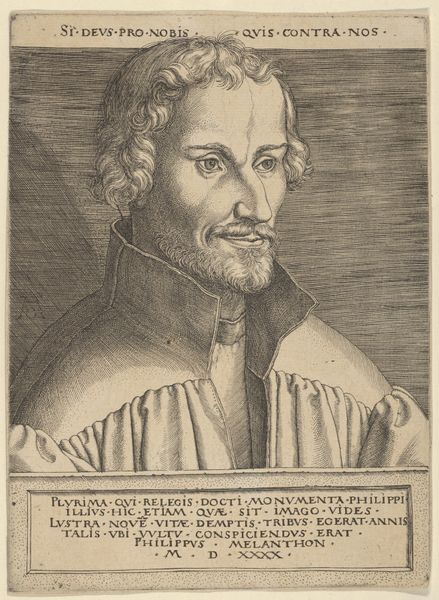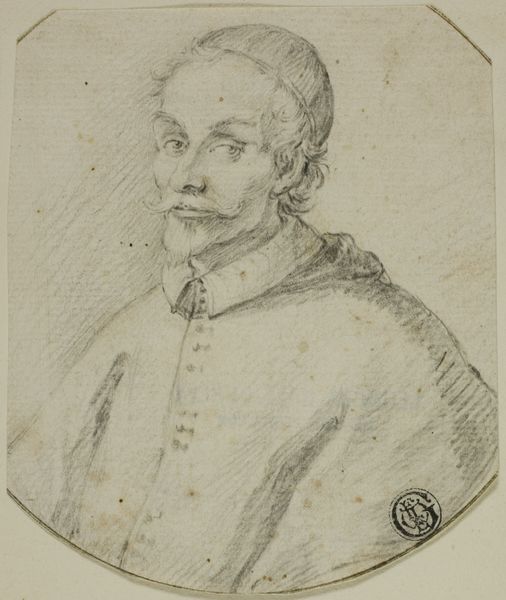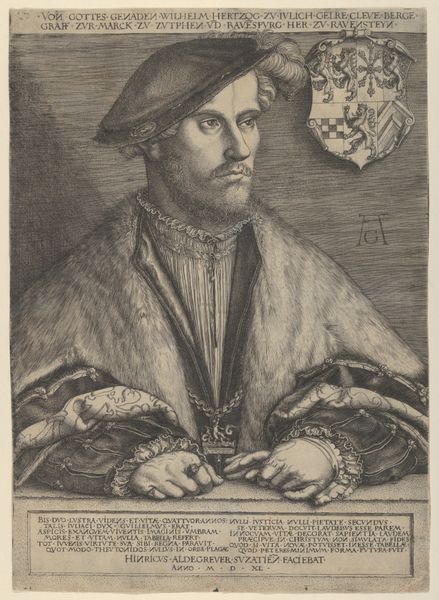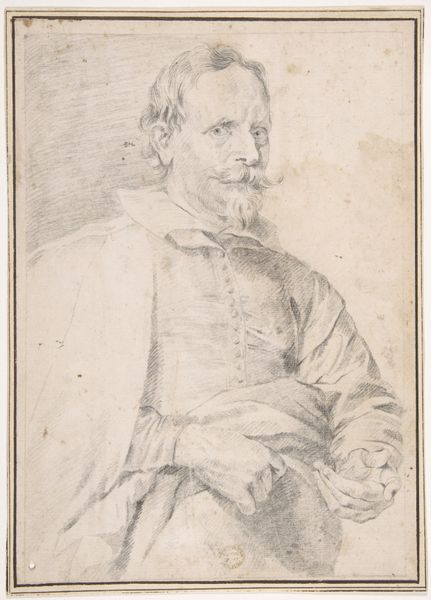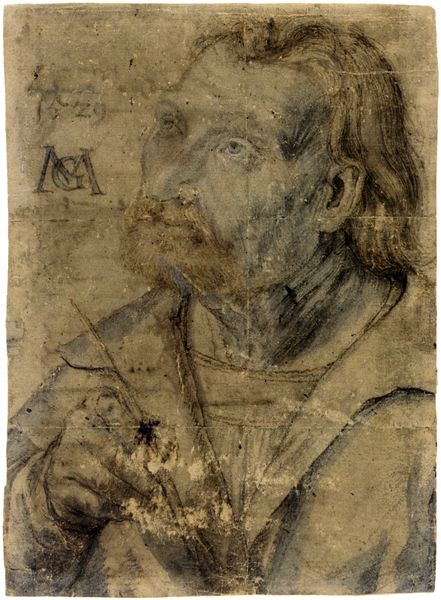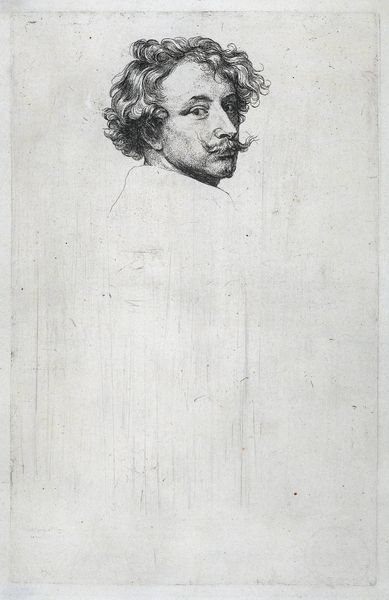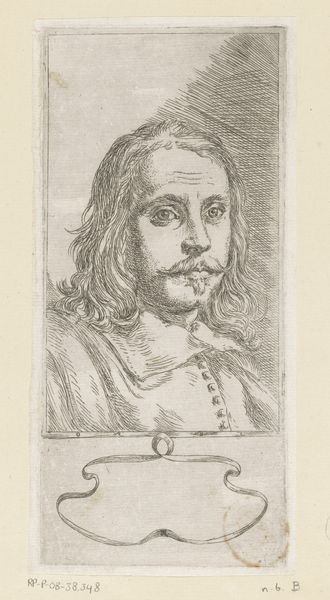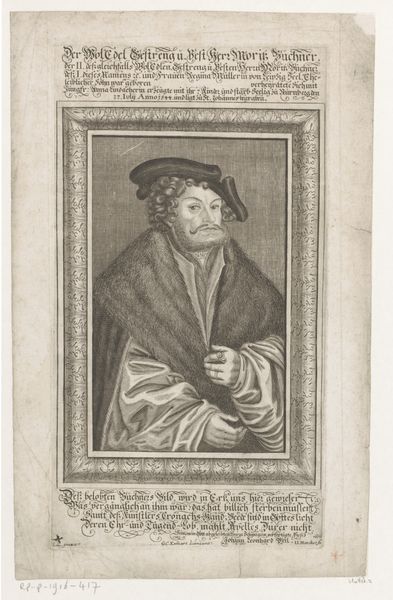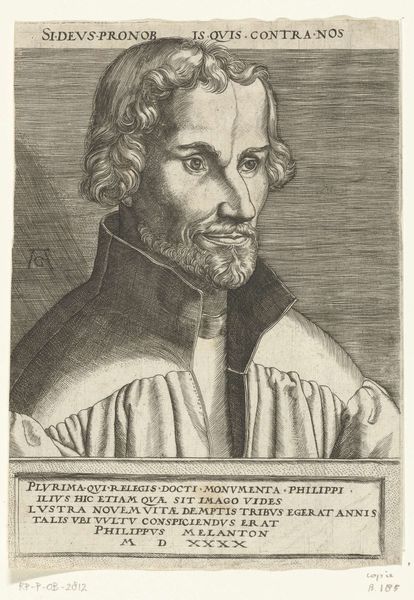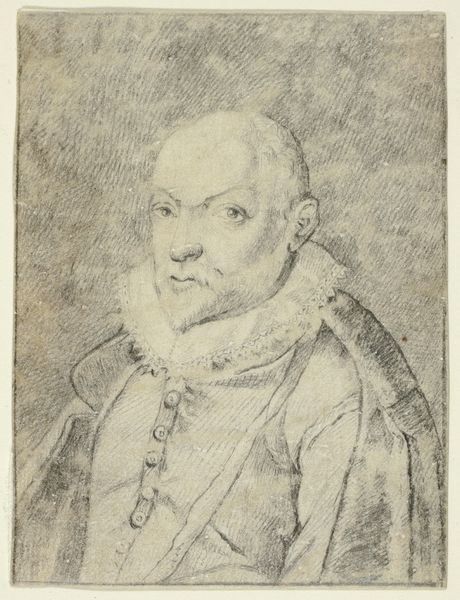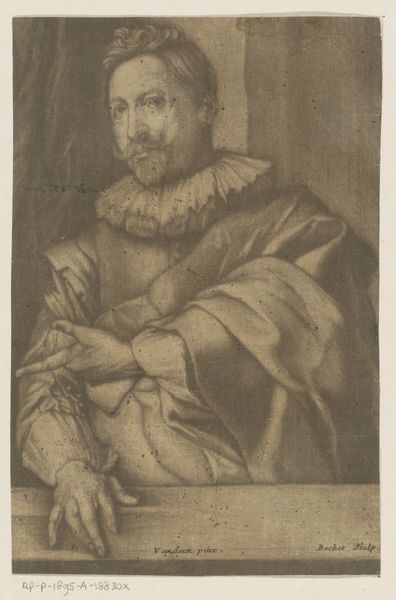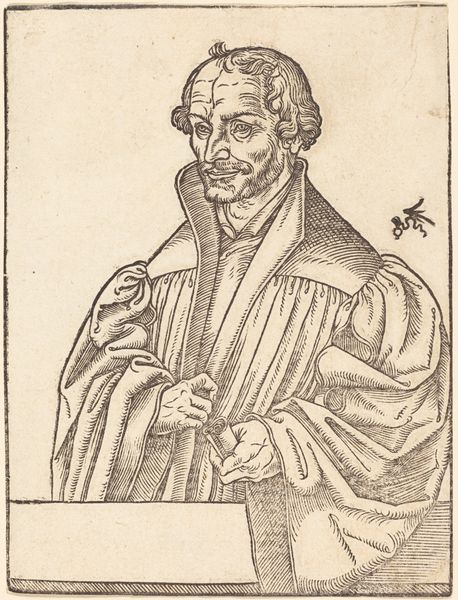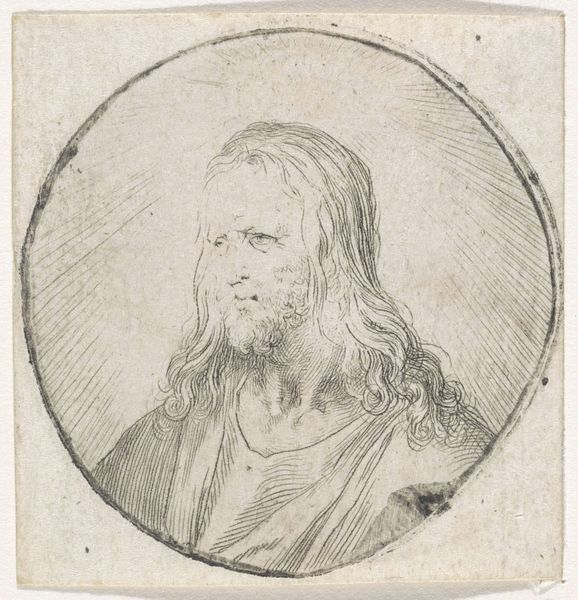
print, engraving
#
portrait
# print
#
line
#
northern-renaissance
#
engraving
Dimensions: 165 mm (height) x 120 mm (width) (bladmaal)
Heinrich Aldegrever created this portrait of Philipp Melanchthon in the mid-16th century using engraving. Above Melanchthon’s head, the Latin inscription "Si Deus pro nobis, quis contra nos," or "If God is for us, who can be against us?" speaks of divine protection, a common motif during the Reformation. Consider the use of text as image, text as power. In antiquity, inscriptions on monuments were meant to immortalize and sanctify, but here, the Reformation's emphasis on scripture brings that sacred quality directly to the sitter. Compare this with the medieval practice of surrounding holy figures with scripture. The very act of framing Melanchthon with text elevates him, suggesting a parallel between religious authority and the power of the written word. This inscription also resonates on a psychological level, tapping into a deep-seated human desire for protection and validation. It is a powerful expression of faith, intended to instill courage and hope amidst religious and political upheaval. This symbol’s cyclical progression highlights our continuous search for meaning and safety, constantly evolving and adapting to the times.
Comments
No comments
Be the first to comment and join the conversation on the ultimate creative platform.
